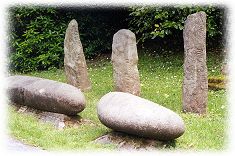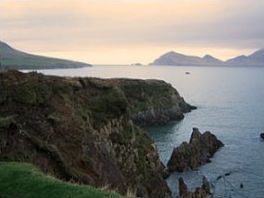|
|
HISTORY

The oldest settlement on the peninsula is at Ferriter's Cove and dates to around 4,000 B.C. The Celts built great forts all around the area. Following the arrival of Christianity in the 5th and 6th centuries many churches and monasteries were established. They were attacked and plundered by the Vikings. They were followed by the Normans, but it was not until the Elizabethan and Cromwellian Plantations that the land and Brehon laws were taken from the Irish.
The great famine, An Gorta Mór, of the 1840s, took its toll on the population of Ireland following the failure of the potato crop. 1847 was the worst year of famine and became known as Black 47. Despite being able to rely on sea for fish the famine also affected the Dingle Peninsula and many of the survivors emigrated to America and England especially from the ports of Blennerville (outside Tralee) and Cobh (formerly known as Queenstown) in County Cork. Between 1848 and 1950, over 6 million emigrated from Ireland with 2.5 million emigrating from the town of Cobh. There is a large exhibition on Irish emigration at "The Queenstown Story", in Cobh, Co. Cork.
 | | Ruins of Dún an Óir |
Famine relief projects, such as the Coastguard Towers on Ceann Sibéal and Ballydavid Head, were created to alleviate the poverty and give the communities some money to purchase food. The ruins of the towers can be accessed by walking through private lands. The Coastguard Station on the top of Ceann Sibéal was 40 feet high and 30 feet square. From the Coastguard, the sister towers on the Great Blasket and Ballydavid Head can be seen. It is very dangerous at the top with a sheer cliff of nearly 700 feet. Permission to pass through the fields to visit the Tower may be required from the landowners.
|
|